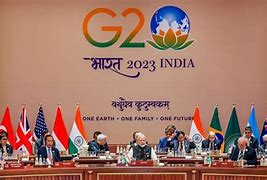One liners not found for this subject
Add One liners
Pharmaceutical Chemistry (Inorganic) Practice MCQs
Question 1 of 55
Q.1 What is green vitrol?
- Copper sulphate
- Ferrous sulphate
- Magnesium sulphate
- Sodium sulphate
Answer ✔ (b) Ferrous sulphate
Explanation: ferrous sulphate is also known as green vitrol (vitriol). It is used to treat Iron deficiency anaemia.
Question 2 of 55
Q.2 Ferrous salt with organic acid is preferred because these are-
- Less astringent
- More potent
- Less astringent and less irritant
- Less irritant
Answer ✔ (c) Less astringent and less irritant
Explanation: Ferrous salt with organic acids (Ferrous fumarate, Ferrous Gluconate etc.) are less astringent and less irritant than ferrous salt alone.
Question 3 of 55
Q.3 Which one of these is used in metabolic alkalosis?
- Sodium chloride
- Sodium bicarbonate
- Ammonium chloride
- Potassium citrate
Answer ✔ (c) Ammonium chloride
Explanation: Ammonium chloride is an acidic salt it converted to ammonia and hydrochloric acid on metabolism, so used to treat metabolic alkalosis.
Question 4 of 55
Q.4 To carry out limit test for sulphate and chloride in potassium permangnate, colour is destroyed by boiling with-
- Water
- Ethanol alcohol
- Oxalic acid
- Sulphuric acid
Answer ✔ (b) Ethanol alcohol
Explanation: Ethanol is used to destroy the pink colour of KMnO4 (potassium permangnate) in the limit test.
Question 5 of 55
Q.5 Which one of these is used in sunburns?
- Titanium oxide
- Potassium iodide
- Boric acid
- Calamine
Answer ✔ (a) Titanium oxide
Explanation: Titanium dioxide is used as a pigment, sunscreen, and a thickener in cosmetic and skin care products.
Question 6 of 55
Q.6 The activity of radioactive particles passing through biological tissue depends on-
- Ability of the radiation to penetrate tissue
- Energy of radiation
- surface area exposed
- all of these
Answer ✔ (d) all of these
Explanation: The radioactive particles are used for diagnostic and therapeutic purposes.
Question 7 of 55
Q.7 Drug used in inhalants administered in the form of-
- solid droplets
- liquid droplets
- gas
- none of these
Answer ✔ (a) solid droplets
Explanation: Small size solid particles of a drug are administered as inhalants.
Question 8 of 55
Q.8 Solution of Borax is used as eyewash and wet dressing for wounds is-
- 1-2% of solution
- 10-20% of solution
- 5-10% of solution
- 70-78% of solution
Answer ✔ (b) 10-20% of solution
Explanation: A 12% w/v solution of Borax is used as eyewash and wet dressing of wounds.
Question 9 of 55
Q.9 Which of the following is used as a protective and soothing application in eczema?
- Silicon polymers
- zinc oxide
- calamine
- bentonite
Answer ✔ (b) zinc oxide
Explanation: Zinc oxide has protective and soothing (non-irritant) properties hence used in eczema.
Question 10 of 55
Q.10 Antacids forms metal complexes with-
- Chloramphenicol
- Paracetamol
- Tetracycline
- Cephalosporin's
Answer ✔ (c) Tetracycline
Explanation: Antacids form complexes with tetracyclines and amphetamine thereby altering their bioavailability.
Question 11 of 55
Q.11 Bismuth subcarbonate is an example of-
- Chelating agent
- Preservative
- Protective and adsorbents
- Cathartics
Answer ✔ (c) Protective and adsorbents
Explanation: Bismuth subcarbonate, methylcellulose, etc. has protective and adsorbent properties and is used for the treatment of Diarrhea.
Question 12 of 55
Q.12 Which statement below is correct for cathartics?
- Agents which reduce the evacuation of bowels
- Agents which is used in case of diarrhoea
- Agents which is used in case of acidosis
- Agents which fastens and increase evacuation of bowels
Answer ✔ (d) Agents which fastens and increase evacuation of bowels
Explanation: Cathartic (sorbitol, magnesium citrate, magnesium sulphate, sodium sulphate) accelerates defecation.
Question 13 of 55
Q.13 Which statement is correct for topical agents?
- It is used externally
- drug may accomplish within body cavity
- They are not placed in eyes, nose or mouth
- All statements are correct
Answer ✔ (c) They are not placed in eyes, nose or mouth
Explanation: Topical agents are used externally and should not be used in eye, nose, or mouth.
Question 14 of 55
Q.14 The stabilizing agent is used with adrenaline injection is-
- Sodium thiosulphate
- Sodium metabisulphite
- sodium bisulphate
- sodium sulphate
Answer ✔ (b) Sodium metabisulphite
Explanation: Sodium metabisulphite (Na2S2O5) is added to adrenaline or lidocaine injection as stabilizing agent to prevent the oxidation of these agents (improves self life)
Question 15 of 55
Q.15 Sodium thiosulphate is used as-
- Antidote
- Antioxidant
- Antifungal
- All of these
Answer ✔ (d) All of these
Explanation: Sodium thiosulphate is used as an antidote for cyanide poisoning, an antioxidant, topical antifungal, and anti-ringworm agent.
Question 16 of 55
Q.16 Which of the following is used as Rust inhibitor?
- sodium nitrite
- calcium carbide
- Liquid nitrogen
- sodium thiosulphate
Answer ✔ (a) sodium nitrite
Explanation: Sodium nitrite is an effective rust inhibitor and is used as an additive in industrial greases.
Sodium nitrite is also used in cyanide poisoning. Sodium nitrite and amine nitrite when used as an antidote for cyanide poisoning a non-toxic cyanide derivative of methaemoglobin (Cyanomethaemoglobin) is formed.
sodium nitrite forms complex ions with different metallic salts.
Question 17 of 55
Q.17 Karl Fischer reagent consists-
- Iodine and sulphur dioxide in water with methanol
- iodine and sulphur dioxide in pyridine with methanol
- sulphur dioxide in pyridine with methanol
- Iodine and sulphur dioxide
Answer ✔ (b) iodine and sulphur dioxide in pyridine with methanol
Explanation: Karl Fischer reagent is a mixture of iodine, sulphur dioxide (SO2), and pyridine in methanol.
Question 18 of 55
Q.18 Salicylic acid is used as-
- Analgesic
- Antipyretic
- Keratolytic agent
- None of these
Answer ✔ (c) Keratolytic agent
Explanation: Salicylic acid, urea, lactic acid, and allantoin are used as keratolytic agents.
Question 19 of 55
Q.19 Collutorium means-
- Eye lotion
- Mouth wash
- Half
- Immediately
Answer ✔ (b) Mouth wash
Explanation: Collutorium or collutory means mouthwash.
Question 20 of 55
Q.20 The Chemical name of Vitamin C is -
- Ascorbic acid
- Benzoic acid
- Maleic acid
- None of the above
Answer ✔ (a) Ascorbic acid
Explanation: Ascorbic acid is known as vitamin C. It is used in the treatment of vitamin C Deficiency and to boost up the immune system.
Question 21 of 55
Q.21 Standard solution of arsenic contain-
- Arsenious acid
- Arsine
- Arsenic acid
- Arsenic oxide
Answer ✔ (c) Arsenic acid
Explanation: Arsenic acid is used to prepare a standard solution of arsenic.
Question 22 of 55
Q.22 The Colour of the lead dithizone complex is-
- Green colour
- Yellow colour
- Violet colour
- None of these
Answer ✔ (c) Violet colour
Explanation: Lead dithizone complex is violet in color.
Question 23 of 55
Q.23 Oxygen is used in the treatment of-
- CO poisoning
- Lead poisoning
- Mercury poisoning
- Blood pressure
Answer ✔ (a) CO poisoning
Explanation: Oxygen is used in Carbon monoxide poisoning.
Question 24 of 55
Q.24 In the limit test of iron, the colour is obtained due to formation of-
- Ferric salt
- Ferrous salt
- Ferrous ion
- Ferric ion
Answer ✔ (b) Ferrous salt
Explanation: In the iron limit test, the colour is produced due to the formation of ferrous thioglycolate salt.
Question 25 of 55
Q.25 Ammonium carbonate assay is based on the principle-
- Acid-base
- Iodometric
- Complexometric
- Conductometric
Answer ✔ (a) Acid-base
Explanation: The assay of ammonium carbonate is based on acidometry and alkalimetry (acid-base) titration. Methyl red solution is used as an indicator for this assay. Ammonium carbonate is used as a respiratory stimulant and expectorant.
Question 26 of 55
Q.1 Aromatic spirit of ammonia is -
- Antidote
- Expectorant
- Respiratory stimulant
- Astringent
Answer ✔ (c) Respiratory stimulant
Explanation: Aromatic spirit of ammonia is a respiratory stimulant. It is used to treat or prevent fainting.
Question 27 of 55
Q.2 Most widely used anticaries agent is-
- sodium bicarbonate
- sodium carbonate
- sodium fluoride
- acacia
Answer ✔ (c) sodium fluoride
Explanation: Fluoride as sodium fluoride or stannous fluoride is used as anticaries agent.
Question 28 of 55
Q.3 Acid-base theory was given by-
- Lewis
- Hamilton
- John
- Raman
Answer ✔ (a) Lewis
Explanation: Acid-base theory was given by Gilbert N Lewis.
Question 29 of 55
Q.4 Caustic soda is synonym of-
- NaOH
- HCl
- CaCO7
- I2
Answer ✔ (a) NaOH
Explanation: Caustic soda is synonym for sodium hydroxide (NaOH).
Question 30 of 55
Q.5 Hydrochloric Acid (HCl ) is used in-
- Diarrhea
- Hyperacidity
- Achlorhydria
- Fever
Answer ✔ (c) Achlorhydria
Explanation: HCl is used in acid deficiency achlorhydria.
Question 31 of 55
Q.6 The colour of the cylinder of nitrous oxide is-
- Red
- Blue
- Black
- Orange
Answer ✔ (b) Blue
Explanation: Nitrous oxide (laughing gas) is used as anesthatic agent in dentistry and supplied in blue coloured cylinders.
Question 32 of 55
Q.7 A gas used for fumigation is-
- Nitrogen oxide
- Ethylene
- Oxygen
- Sulphur dioxide
Answer ✔ (d) Sulphur dioxide
Explanation: sulphure dioxide (SO2) is a fumigating gas.
Question 33 of 55
Q.8 Antimony potassium tartarate is used as-
- Antidote
- Emetic
- Astringent
- Buffer
Answer ✔ (b) Emetic
Explanation: Emetics are used to induce vomiting. Antimony potassium tartarate syrup of Ipecac and CuSO4 are used as emetics.
Question 34 of 55
Q.9 Amchlor is a synonym of-
- Ammonium chloride
- Sodium chloride
- Potassium chloride
- Ammonium hydroxide
Answer ✔ (a) Ammonium chloride
Explanation: Ammonium chloride is also known as Amchlor, used as diuretic and expectorant.
Question 35 of 55
Q.10 Iodine dissolves in water with the addition of-
- Sodium chloride
- Sulphur
- Potassium iodide
- Calcium carbonate
Answer ✔ (c) Potassium iodide
Explanation: potassium Iodide (KI) forms KI3 (polyiodides) with I2. KI3 is soluble in water.
Question 36 of 55
Q.11 Antidote used in Cyanide poisoning is-
- Sodium chloride
- Potassium iodide
- sodium thiosulphate
- sodium bicarbonate
Answer ✔ (c) sodium thiosulphate
Explanation: sodium thiosulphate, amyl nitrite, sodium nitrite etc. are used in cyanide poisoning.
Question 37 of 55
Q.12 Unit of measurement of radioactivity is-
- Curie
- Cm
- Litre
- Gm
Answer ✔ (a) Curie
Explanation: The unit of radioactivity is Curie and BcQurel.
Question 38 of 55
Q.13 Which of the following particles have no charge and mass?
- α- particles
- β-particles
- γ-particles
- All of the above
Answer ✔ (c) γ-particles
Explanation: γ particles have no charge and mass. They have lowest ionising power among the three particles.
Question 39 of 55
Q.14 Milk of magnesia is a common name for-
- Suspension of magnesium oxide
- suspension of magnesium hydroxide
- suspension of magnesium carbonate
- none of the above
Answer ✔ (b) suspension of magnesium hydroxide
Explanation: suspension of magnesium hydroxide is known as milk of magnesia. It is used as laxative and antacid.
Question 40 of 55
Q.15 Epsom salt is-
- Sodium sulphate
- Potassium sulphate
- Magnesium sulphate
- none of the above
Answer ✔ (c) Magnesium sulphate
Explanation: Magnesium sulphate is commonly known as epsom salt. It is used both externallyas in aches and pains and internally as saline laxative.
Question 41 of 55
Q.16 Brine is a concentrated solution of-
- sodium hydroxide
- sodium chloride
- Potassium chloride
- Potassium carbonate
Answer ✔ (b) sodium chloride
Explanation: Solution of table salt is known as Brine.
Question 42 of 55
Q.17 Tincture of iodine is -
- Strong iodine solution
- weak iodine solution
- Aqueous iodine solution
- none of the above
Answer ✔ (b) weak iodine solution
Explanation: Tincture of iodine (2 - 7%) is an antiseptic. It is also called weak iodine solution.
Question 43 of 55
Q.18 Ammonium chloride is dried by-
- Heating to constant weight
- Keeping in air
- Drying over desicant
- All of the above
Answer ✔ (c) Drying over desicant
Explanation: ammonium chloride is dried over a desicant. Direct heating decomposes ammonium chloride to ammonia and HCl.
Question 44 of 55
Q.19 Which one of these is used to treat dandruff?
- Sulphur
- Selenium sulphide
- yellow mercuric oxide
- none of the above
Answer ✔ (b) Selenium sulphide
Explanation: Selenium sulphide is used as antifungal agent in treating dandruff.
Question 45 of 55
Q.20 Alum is added to bacterial toxins and toxoids to-
- increase activity
- precipitation of protein
- Reduce toxicity
- none of the above
Answer ✔ (a) increase activity
Explanation: Alum is used in vaccines to increase the activity.
Question 46 of 55
Q.21 What is calamine?
- Zinc oxide
- Zinc oxide with traces of magnesium oxide
- Zinc oxide with traces of ferric oxide
- Zinc carbonate
Answer ✔ (c) Zinc oxide with traces of ferric oxide
Explanation: Calamine is a mixture of zinc oxide with 0.5% ferric oxide. It is used as anti-pruritic agent.
Question 47 of 55
Q.22 Which one of these is a major cation in intracellular fluid?
- Potassium
- Sodium
- magnesium
- calcium
Answer ✔ (a) Potassium
Explanation: Potassium is a major intracellular cation and sodium is a major extracellular cation.
Question 48 of 55
Q.23 Titrant used in the assay of ferrous sulphate I.P.1996 is-
- Potassium parmangnate
- cerric ammonium sulphate
- sulphuric acid
- none of the above
Answer ✔ (b) cerric ammonium sulphate
Explanation: Ferrous sulphate is assayed with cerric ammonium sulphate (redox titration I.P. 1996).
Question 49 of 55
Q.24 The lead acetate cotton wool is used in limit test for arsenic to-
- Make the arsine gas
- Develop the yellow colour
- Trap the hydrogen sulphide gas
- none of the above
Answer ✔ (c) Trap the hydrogen sulphide gas
Explanation: Lead acetate wool or paper are used to trap hydrogen sulphide gas which may be involved along with arsine gas. The hydrogen sulphide gas also react with mercuric chloride paper to give yellow colour.
Question 50 of 55
Q.25 Limit tests are performed in-
- Flask
- Test Tube
- Nesslar cylinder
- none of the above
Answer ✔ (c) Nesslar cylinder
Explanation: Nesslar cylinder also known as colour comprison cylinders are used to perform limit tests.
Question 51 of 55
Q.26 Silver nitrate should be stored in-
- clean, dry white bottles
- lead free white bottle
- amber colourd bottle
- neutral glass bottle
Answer ✔ (c) amber colourd bottle
Explanation: Silver nitrate should be protected from light. So must be stored in amber coloured bottles.
Question 52 of 55
Q.27 The drug commonly used to prevent sepsis in severe burn cases is-
- sulfamethoxazole
- silversulphadiazine
- Salazopyrine
- Sulfadiamidine
Answer ✔ (b) silversulphadiazine
Explanation: Silver sulphadiazine (silvadine) is a topical antibacterial used as topical cream or burns (antiseptic cream).
Question 53 of 55
Q.28 Which of the following is used as cryotherepeutic agent?
- Calcium carbide
- Liquid nitrogen
- calcium cyanamide
- sodium nitrite
Answer ✔ (b) Liquid nitrogen
Explanation: Liquid nitrogen is used as cryotherapeutic agent for removing malignant skin lesions such as warts and keratosis.
Question 54 of 55
Q.29 which of the following is used in the eye treatment in minor infections?
- Ammoniated mercury
- Yellow mercuric oxide
- Potassium permangnate
- none of the above
Answer ✔ (b) Yellow mercuric oxide
Explanation: a very low concentration of HgO is used in eye infections.
Question 55 of 55
Q.30 which of the following is used as Rust inhibitor?
- Sodium nitrite
- liquid nitrogen
- Calcium carbide
- sodium thiosulphate
Answer ✔ (a) Sodium nitrite
Explanation: sodium nitrite is an effective rust inhibitor and is used as an additive in industrial greases.
.png)











.jpg)






